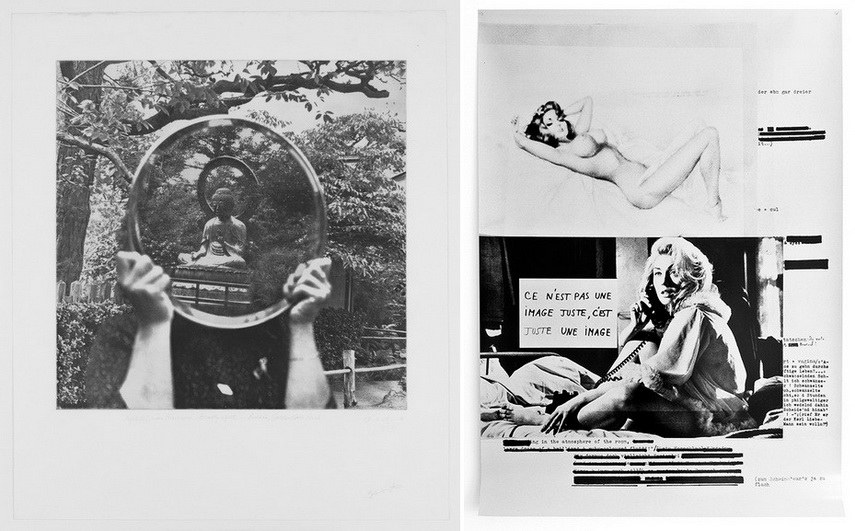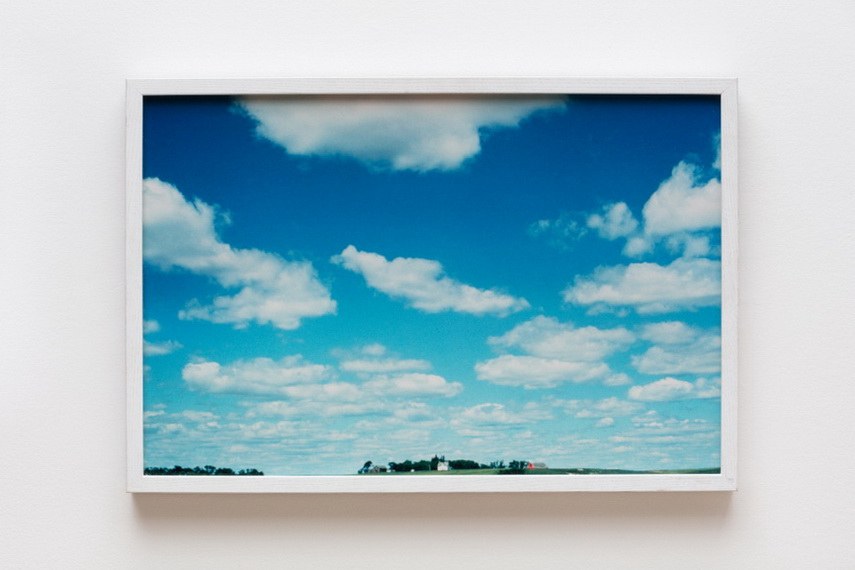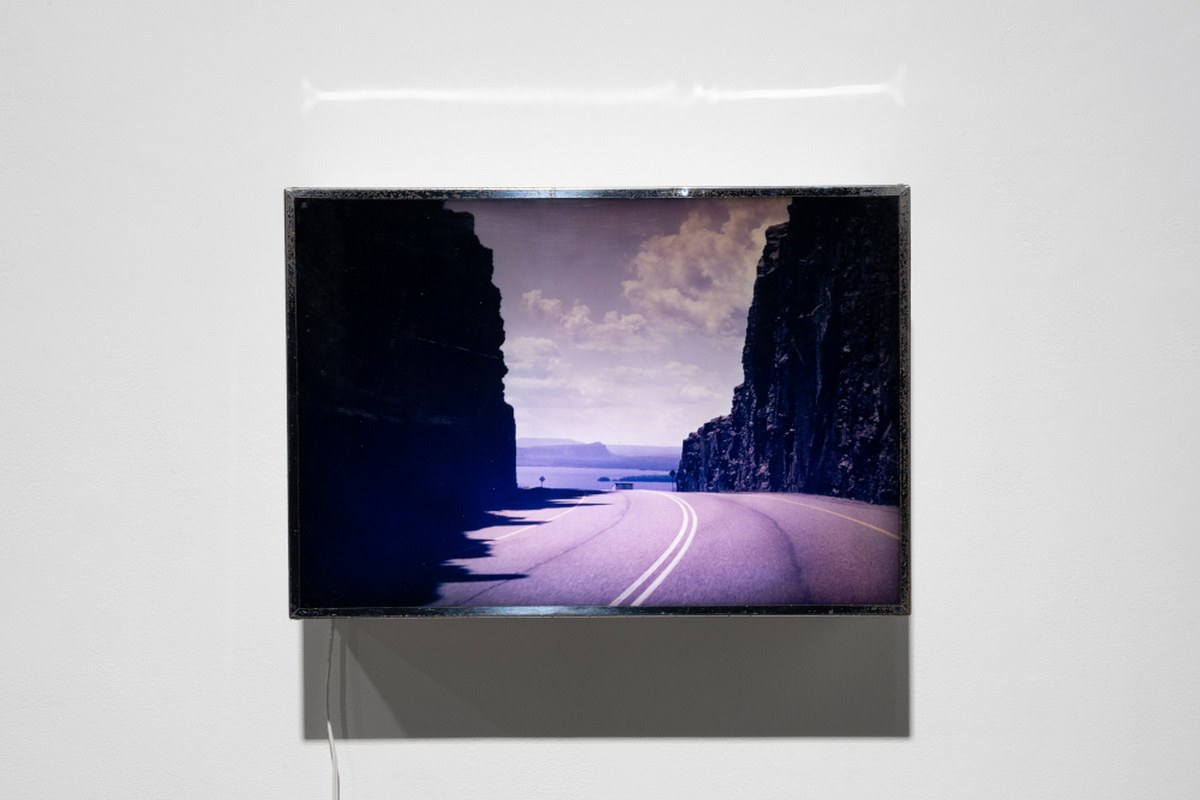[ad_1]
The majority of the artists working during the 1980s were exploring the influence of mass media and popular culture on the society in global terms. While some of them embraced the technologies of their time such as computers or advanced video equipment, others experimented with older media such as photography and print, at the same time creating multilayered imagery which resisted categorization.
Although they belong to different generations and backgrounds, and they practiced different approaches, the artists Astrid Klein and Iain Baxter& shared similar critical strategies of image construction, so it is not that unusual that the two brief surveys of their work coincides at the famous Arts Club in London, both exhibitions being curated by Amelie von Wedel and Pernilla Holmes from Wedel Art.

The Multimedia Practice of Astrid Klein
Astrid Klein is a renowned German artist who committed herself to photography in 1978, and through her early works she explored the themes of identity, politics and human tragedy. Those were not plain photographic works; rather, they were images appropriated from magazines refabricated through various developing and printing techniques, photo-montaging of positive and negative images, enlargement, etching, and stenciling over negatives. The newly formatted images are then contrasted with the text drawn from various philosophical, aesthetic and scientific sources, so the final composition becomes almost abstract.
To be more precise, the artist dealt with the mechanisms of representation as well as power structures which determine our perception and our reasoning. That is why Klein’s works are offering a new kind of meaning, implying the continuous instrumentalization imposed by the mass media.
Astrid Klein was very much inspired by the French Nouvelle Vague film movement and the photo comic genre, and her practice can even be interpreted in the context of feminism (certain parallels can be drawn with the work of Barbara Kruger). Her earlier works in particular are centered on the representation of women in the mainstream media, film stars and political factions such as the Baader-Meinhof Group. Throughout the years, Klein developed an astonishing and recognizable body of work based on a constant search for new forms of crossing the borders between the media with a devoted emphasis on a complex relationship between the word and image.

The Powerful Imagery of Iain Baxter&
On the other hand, there is the celebrated Canadian artist Iain Baxter&, a pioneering figure in conceptual art. Through the decades, he has been exploring the mechanisms behind the flow of information. Namely, Baxter& produced distorted images of his surroundings which served as indicators of information-driven society; he even used the term Infoscape to describe his perception of the landscape as a signifier for humanity.
In 1966 together with his partner Ingrid Baxter, the artist founded N.E. Thing Co., a conceptual platform that viewed the art world as parallel [to] consumer culture. They have focused an interdisciplinary practice including photography, site-specific performances and installation, and their activity was described as a key catalyst and influence for Vancouver photo-conceptualism. Namely, such a label was not ungrounded, since N.E. Thing Co. created the pioneering photo conceptual works in order to demonstrate that photography can be used to document idea-works and their sites, as language games and thematic inventories and as reflective investigations of the social and architectural landscape. Despite the great efforts to move their experimentation forward, N.E. Thing Co. stopped operating in 1978 after Iain and Ingrid split.
Iain Baxter was largely inspired by the highly regarded media philosopher and fellow Canadian Marshall McLuhan, and his famous maxim the medium is the message played an important role in Baxter&’s practice. That is best manifested in a collection of photographs depicting famous landmarks in San Francisco reflected in a mirrored dish titled simply Reflected San Francisco Beauty Spots. The layered image perplexes the viewer’s perception, yet it evokes a certain feeling of nostalgia.
For this occasion at The Arts Club, these works will be displayed together with Baxter&’s celebrated Road Trip photographs, images of the North American landscape taken through the car window which are illuminated on a medical light-box.

Astrid Klein and Iain Baxter& at the Arts Club
The curatorial decision to feature the works of Klein and Baxter& seems justified; however, the question remains how these strong conceptual works will function in a lavish interior with splashy chandeliers, marble fireplaces, and polished surfaces. Hopefully they will be observed with much-required caution and consideration.
Both exhibitions will be on display at The Arts Club in London from 29 April until September 2019.
Featured images: Iain Baxter – N.E. Thing Co., Transcanada highway, near Fort William, Ontario, Canada, 1968, 50 x 34.5 x 14 cm. Installation view; Astrid Klein – Untitled (adviceresistant), 1988-93. Acrylic, gypsum alabaster on canvas. 140 × 200 cm. Courtesy of the artist and Sprüth Magers. All images courtesy The Arts Club.
[ad_2]
Source link

